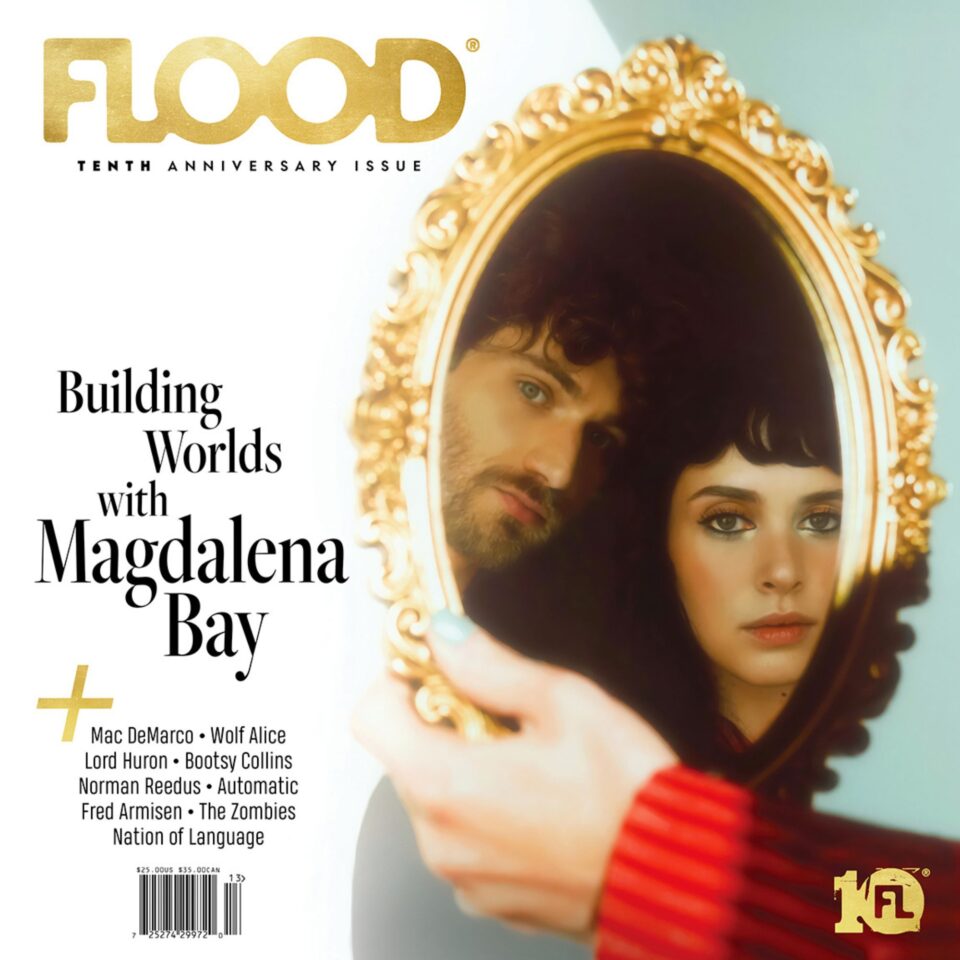Over the weekend I was almost certainly the last person to see I Saw the TV Glow, Jane Schoenbrun’s new movie managing to condense infinitely vast questions like “How much power does a network kids TV series have to help one realize their repressed gender identity?” and “How can one mass medium be responsible for both literally numbing Gen-Xers to death and unconsciously inspiring heavy inner dialogues within Millennials?” and “What would it look like if you shoehorned an unfiltered Conner O’Malley into a deeply existential horror movie?” in under two hours. While the film left me with plenty to chew on (is it technically a prequel to We’re All Going to the World’s Fair, considering that it explicitly deals with the ways in which screen media played the role of both loving and neglectful mother to the previous generation?), but it also reminded me of a very simple fact: King Woman rocks.
It was only three years ago that I was last reminded of this fact, when Kris Esfandiari released her sophomore album with the form-defying doom-metal project, with Celestial Blues displaying an even more accessible sound than the band’s 2017 debut (is there a more conventionally doom-metal album title than “Created in the Image of Suffering”?). Yet with no new material to speak of since then, I was immediately rehooked when Esfandiari took the stage mid-film to scream through a live rendition of the Celestial Blues cut “Psychic Wound”—and again as everyone filed out of the theater and I sat absorbing the original-to-the-soundtrack single “Bury.” “It was just one of those magical occurrences where it felt like something I was just meant to be a part of,” Esfandiari shared with us upon the film’s release regarding her involvement with the soundtrack. “It felt like a very important, magical thing was happening.”
With this renewed interest in Esfandiari’s work in mind, I figured it would be a good moment to sift through some of the artist’s other projects outside of King Woman, which range from cloud rap to post-industrial techno to melancholy dream-pop—all of it worth you time, even if the term “death industrial” mean nothing to you. Additionally, if you’re in New York, make sure to catch King Woman perform at Outline fest this Saturday alongside The Armed, Chat Pile, and more.
King Woman, Doubt EP (2015)
Atmospheric sludge introducing the King Woman project as a sleepy take on post-metal with the heavy-hitting, snail’s-pace riffs of its four songs taking a much more reverent approach to genre than Celestial Blues would seven years later. “King of Swords” is equally memorable for its waves-incessantly-crashing instrumental as it is for the weary husky-alto bellowing to be heard over it all.
Miserable, Uncontrollable (2016)
For some reason it still seemed to be weirdly uncool to be making shoegaze and slowcore at this moment, which makes Esfandiari’s blend of the two with her Miserable project all the more unique among its time period. Having worked on this project and King Woman at the same time with equal amounts of dedication to both, it would be hard to separate the two if it wasn’t for the dramatic gulf in mood separating the two—King Woman using atmosphere to tread in quiet vengeance, this project simmering in it to soundtrack ethereal longing, both relying on shockingly similar vocal performances to ground their compositions.
King Woman, “I Wanna Be Adored” (Stone Roses cover) (2018)
I mean, the original version has quietly entered the canon of tracks that you can’t go wrong covering, but this take is still an all-timer. In a sense, the slow build-up before screeching back and forth between slow-roaring guitars annihilating your eardrums to a mostly guitar-free, quietly sung chorus is the epitome of what this project is all about.
Dalmatian, “Pain Threshold” (2019)
For about a year leading up to the reveal of a second King Woman album, Esfandiari was firing on all cylinders with all kinds of non-metal experimental projects working in similar emotional realms (and, of course, hinging on her distinctive voice—though ironically most of these projects saw her explore more chaotic vocal techniques than those featured in her literal metal band). “Pain Threshold,” one of only two singles she’s released under the Dalmatian moniker, might be my favorite—intense hardcore hip-hop blending emo rap’s feeling with industrial trap-metal’s intensity. I’m surprised she hasn’t brought this moniker to a Ho99o9 tape yet.
NGHTCRWLR, HiSeq_Let the Children Scream (2020)
In a similar realm, her sole LP as NGHTCRWLR leaned further into the industrial horror of Dalmatian, swapping the balaclava for something a little gimpier (she was performing NGHTCRWLR tracks with Plack Blague right before the pandemic hit). The whole LP heaves like a Pharmakon record frequently interrupted by samples of children singing and men speaking in tongues, harsh-noise squelches, heavy trap beats, and, of course, those familiar vocals going full terrorizer mode.
Kris, “Big Dreams” (2020)
Bit of a comedown after the quick succession of NGHTCRWLR and Dalmatian, but feels like an apt connecting tissue between those projects and the collaboration she had on the immediate horizon at this point. The single track she’s released mononymously (with Fleshwater’s Mirsy on guitar) feels like it could’ve been part of the Goth Boi Clique universe if the occasionally flaring vocals didn’t scare them all off.
Sugar High, Love Addict (2020)
Speaking of GBC, Esfandiari released a single EP as Sugar High with Darcy Baylis, who’s produced for Wicca Phase Springs Eternal on several of his recent releases. This EP features a similar balance of lovesickness and spell-casting, which has Baylis’s signature all over it from the first track’s electronic hi-hat tapping production to the gossamer emo vocal harmonies he lends to much of the release.
Rituals of Mine feat. Kris “Free Throw” (2020)
A rare guest verse for Esfandiari (she’s since teamed up with metalcore group Harm’s Way for a track on Common Suffering and darkwave figure Mareaux for a cut on Lovers From the Past, both in 2023), who joined downtempo songwriter Terra Lopez on their 2020 LP HYPE NOSTALGIA for a track which falls in line with Kris’ output spanning the entire year. If you’d told me this was where King Woman was headed in 2015 I not only wouldn’t have believed you, but I probably wouldn’t have been nearly as thrilled to hear that as I should’ve been.
King Woman, “Bury” (2024)
Unexpected bit of mediation between the Relapse Records roster and those Phoebe Bridgers tees mimicking the black metal font. This is the track that plays you out of the theater at the end of I Saw the TV Glow which, in the spirit of the 2000s OSTs the film takes inspiration from, goes unreasonably hard.







